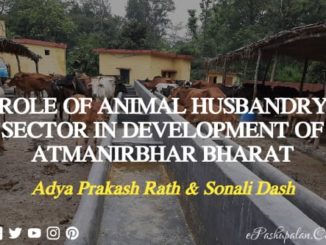Introduction
Corona viruses are members of the Coronaviridae family. The coronaviridae family gets its name from the numerous crown-like spikes that protrude from their surface and cause respiratory tract infections in humans. Humans suffer from mild illnesses such as the common cold, while fatal strains can cause extreme acute respiratory syndrome (SARS), also known as the Middle East respiratory syndrome (MERS). A new strain of corona virus was first identified in Wuhan, China, in December 2019. Epithelial cells are their primary focus. Viruses are transmitted from one host to another through aerosol, fomite, and the faeco-oral pathway. COVID-19 has been proclaimed a pandemic disease by the WHO and dubbed 2019-nCoV or 2019 novel corona virus. A pandemic is characterized as a disease that spreads across a large geographic region and affects a large proportion of the population. Corona viruses are single-stranded RNA viruses with a diameter of around 120 nanometers that are extremely diverse due to mutation and recombination.
Impact of COVID 19 Lockdown and its effect on Animal Husbandry Sector
There is less ability to focus on animal welfare practices such as artificial insemination, vaccines, handling sick animals, and prophylactic therapy due to the national lockdown and labor shortage. Millions of people’s livestock income, food stability, and nutrition are all threatened by the Covid-19 crisis. Replacement supplies (semen, day old chicks) are limited as a result of travel restrictions, labor shortages, raw material shortages, breeding materials shortages, and milking machine shortages. Disruption of public programs, along with delays in the supply of drugs and vaccines, increases the risk of emerging epidemics, including animal diseases that result in significant agricultural deaths and outbreaks of diseases that are transmissible to humans. This lockout has a significant effect on stray animals and birds, as they are unable to feed themselves due to the closure of both restaurants and roadside eateries. The effect of COVID-19 on the food production industry has been felt by livestock. During the lockdown, the effect was two-fold: the beef trade was affected, while customer feeding patterns were altered. People sought more basic foods (flour and eggs) and favored more cost-effective forms of meat over pricey non-vegetarian food products as supermarkets, stores, classrooms, and canteens closed. Food sourced locally and online shopping have become more available. Although warehouse storage can help the industry handle certain improvements, this is not achievable for long periods of time or for any perishable milk and meat commodity. As a result, some farmers have had difficulty selling their livestock. Abattoirs, meat processing and packaging plants became hot spots for COVID-19.
Importance of Veterinarians in COVID 19 Crisis
Human and animal wellbeing are inextricably linked to the health of the environment in which they coexist. Every year, a large number of human diseases arise from animal sources, increasing the risk of death. According to the World Organization for Animal Health, sixty percent of all human infectious diseases are spread by livestock, and this condition is exacerbated in our society, where humans and animals live in near proximity due to the country’s reliance on agriculture. While COVID-19 has mostly impacted human health, joint activities about the link between animal and human health, an interrelationship implicit in the One Health principle, have been recognized and accepted. COVID-19 research for humans is supported by veterinary laboratories. Veterinarians from around the country volunteered to participate in RT-PCR tests, and veterinarian practices donated devices including ventilators. Sniffer dogs are being taught to detect COVID-19 in patients, and is a novel example of humans and animals working together.
The covid-19 pandemic is putting a lot of strain on public health systems. A multidisciplinary collaboration strategy is expected to mitigate the effect of this rapidly spreading virus. Veterinary services contribute in a variety of ways to a coordinated pandemic response. Not only have veterinarians demonstrated their dedication to animal welfare, but they have also demonstrated their commitment to supporting the efforts of public health agencies. Veterinary laboratories have used their knowledge and skills in infectious disease high throughput research capability to participate in tasks such as surveillance monitoring by testing individual samples, thus assisting human health systems in their diagnostic capacity. Veterinary epidemiologists have been assisting their human colleagues in tracking infections and developing successful public health interventions.
National and regional veterinary regulatory and inspection agencies are also part of the veterinary services, which oversee the integrity of public health. Veterinarians play a vital role in disease control for both animals and humans in order to avoid disease outbreaks and zoonotic diseases. They protect food quality and the safety of people’s food by ensuring that only healthy animals and their products are allowed into the food chain. Aside from that, they are in charge of the treatment of laboratory animals, who are essential for the development of medicines and vaccines, including vaccines against COVID-19. Veterinarians wear protective personal clothing and retain social distance to ensure an acceptable degree of biosecurity, which protects the welfare of our animal patients as well as their owners.
Conclusion
The economic, animal health, and food security consequences of COVID-19 are as critical as ever. The OIE is completely mobilised to assist veterinary services around the world in addressing the crisis, as part of its commitment to set animal health and safety requirements, to educate, and to develop capability. It has set up a response system to assist them in all areas of their job. The OIE works closely with its three partners: the World Health Organization (WHO), the Food and Agriculture Organization (FAO), and the World Organization for Animal Health (FAO). Several OIE advisory committees are developing professional recommendations on research goals, sharing the findings of ongoing animal research, and developing scientific opinion on COVID-19’s implications for animal health and veterinary public health. Animals play a vital part in our community. They are not only an important part of our food chain, but they are also our caring friends and, in many cases, coworkers. The COVID-19 pandemic poses a danger to the health of all species. As a result, veterinarians’ reactions to COVID-19 have been positive in any way.






Be the first to comment